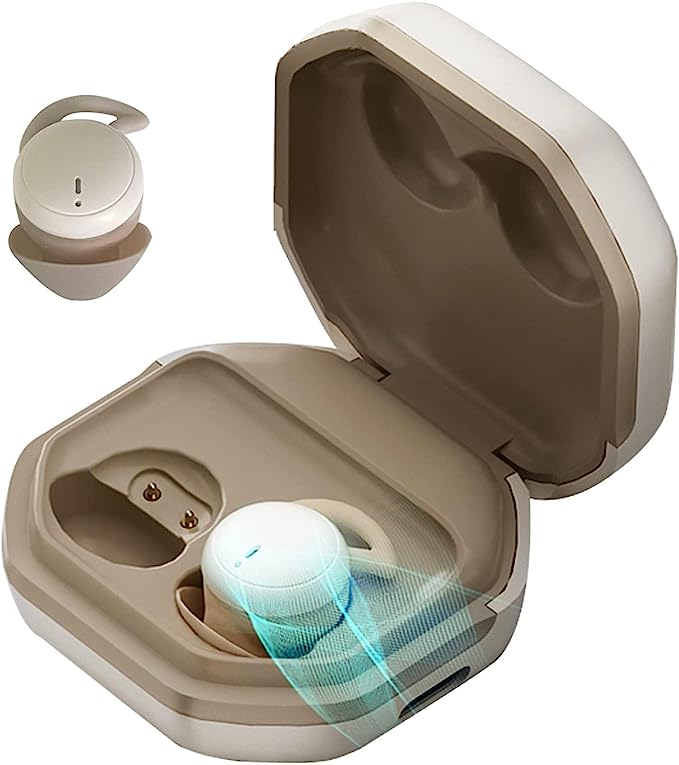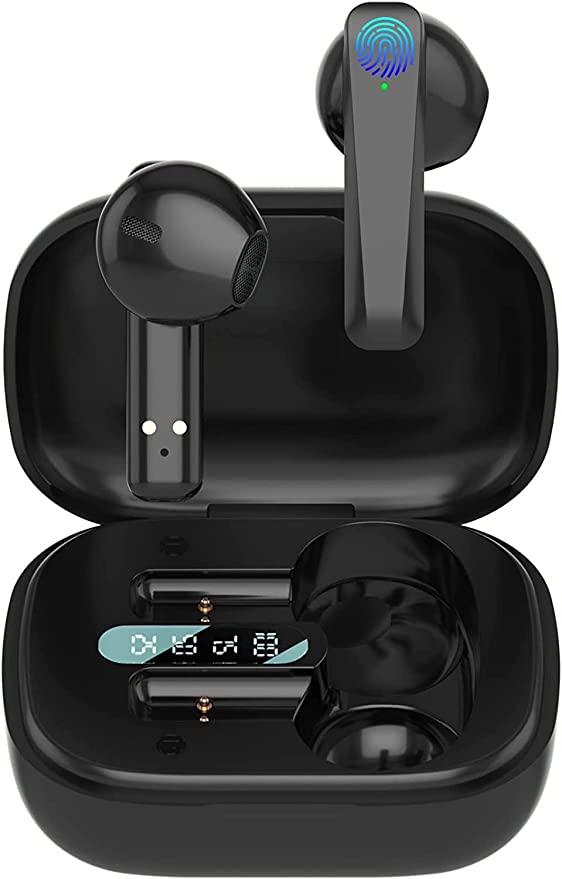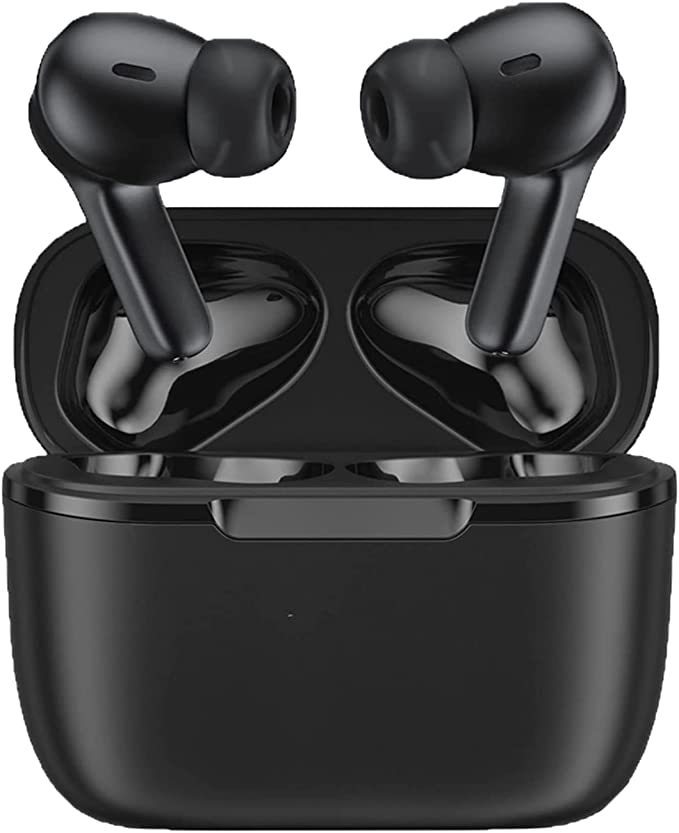OnePlus Buds Z2: Silence the World with Powerful Noise Cancellation
Update on Feb. 19, 2025, 6:55 a.m.
Imagine stepping out onto a bustling city street. A cacophony of sounds assaults your ears – the rumble of traffic, the blare of horns, the chatter of crowds, the insistent drilling from a nearby construction site. It’s a sensory overload, a constant barrage of noise that can be distracting, stressful, and even harmful to your hearing. We crave moments of peace, of silence. Yet, we also yearn for the rich, immersive experience of high-fidelity sound, whether it’s losing ourselves in a favorite piece of music or being transported to another world by a film’s soundtrack. This seemingly contradictory desire – for both silence and sound – is at the heart of modern audio technology, and it’s beautifully addressed by advancements like Active Noise Cancellation (ANC) and Dolby Atmos.

Sound: The Invisible Wave
Before we dive into the intricacies of noise cancellation, let’s take a step back and appreciate the fundamental nature of sound itself. Sound is, at its core, a vibration. When an object vibrates – a guitar string, a vocal cord, a loudspeaker – it creates pressure waves that travel through a medium, typically air. These waves are invisible, but they carry energy, and when they reach our ears, we perceive them as sound.
These sound waves have two key characteristics that determine what we hear: frequency and amplitude. Frequency, measured in Hertz (Hz), refers to the number of wave cycles per second. A higher frequency corresponds to a higher-pitched sound, like the delicate trill of a flute, while a lower frequency corresponds to a lower-pitched sound, like the deep rumble of a bass drum. The human ear can typically hear sounds ranging from about 20 Hz to 20,000 Hz, although this range can vary with age and individual differences. Think of it like the keys on a piano – each key produces a different frequency, resulting in a different note.
Amplitude, on the other hand, relates to the intensity or power of the sound wave. It’s what we perceive as loudness. A larger amplitude means a louder sound, like a shout, while a smaller amplitude means a softer sound, like a whisper. Amplitude is often measured in decibels (dB), a logarithmic scale that reflects the vast range of sound intensities our ears can handle.

The Magic of Interference: How Noise Cancellation Works
Now, here’s where things get really interesting. Sound waves, like all waves, can interact with each other in a phenomenon called interference. When two waves meet, they can either combine constructively or destructively.
Imagine two people pushing a child on a swing. If they push at the same time and in the same direction (in phase), the swing will go higher – this is constructive interference. The amplitudes of the two pushes add up. But if they push at opposite times (out of phase), one pushing forward while the other pulls back, the swing’s movement will be dampened or even stopped – this is destructive interference. The amplitudes effectively cancel each other out.
Active Noise Cancellation (ANC) ingeniously exploits this principle of destructive interference. The basic idea is to create an “anti-noise” sound wave that is the exact opposite of the unwanted noise. When this anti-noise wave meets the original noise wave, they cancel each other out, resulting in silence – or at least, a significant reduction in noise.
A Brief History of Silencing the World
The concept of noise cancellation isn’t new. The earliest theoretical work on the subject dates back to the 1930s, with a patent filed by Paul Lueg, a German physicist. However, the technology to make it practical didn’t exist at the time. Early attempts were largely focused on industrial applications, such as reducing noise in aircraft cockpits. It wasn’t until the late 20th century, with the advent of miniaturized electronics and digital signal processing, that ANC became feasible for consumer products like headphones. The first commercial ANC headphones were primarily aimed at pilots and frequent flyers, but the technology has since become increasingly sophisticated and affordable, making its way into everyday earbuds like the OnePlus Buds Z2.
Inside the Tech: How ANC is Achieved
An effective ANC system relies on three key components: microphones, a processing unit, and speakers.
- Microphones: Tiny microphones, typically placed both inside and outside the earcups (or earbuds), “listen” to the ambient noise around you and the sound inside.
- Processing Unit: This is the brain of the operation. It’s a small but powerful chip that analyzes the incoming noise signals and generates the anti-noise wave. This involves complex algorithms and digital signal processing (DSP) techniques.
- Speakers: The same speakers that deliver your music also play the anti-noise wave.
There are different approaches to ANC, each with its own strengths and weaknesses:
- Feedforward ANC: This uses microphones placed outside the earcups to capture the ambient noise before it reaches your ears. The processing unit then creates an anti-noise wave based on this external sound. Feedforward ANC is generally effective at canceling out constant, predictable noises like the drone of an airplane engine.
- Feedback ANC: This uses microphones placed inside the earcups, near the speaker, to monitor the sound that actually reaches your ear. The processing unit adjusts the anti-noise wave based on this feedback, making it more effective at dealing with variations in noise and how the headphones fit.
- Hybrid ANC: This, as the name suggests, combines both feedforward and feedback ANC, using microphones both inside and outside the earcups. This provides the most comprehensive noise cancellation, addressing a wider range of frequencies and noise types. The OnePlus Buds Z2 utilize hybrid ANC, combining the strengths of both approaches.
The processing unit doesn’t just blindly invert the incoming sound wave. It uses sophisticated algorithms, often based on the Fast Fourier Transform (FFT), a mathematical technique that breaks down complex waveforms into their individual frequency components. This allows the ANC system to target specific noise frequencies with greater precision.

Beyond Silence: Transparency Mode
While ANC is fantastic for blocking out distractions, there are times when you need to be aware of your surroundings. This is where Transparency Mode comes in. By activating Transparency Mode, the external microphones on the earbuds are used to amplify ambient sounds, rather than cancel them out. This allows you to hear conversations, traffic noises, or announcements without having to remove your earbuds. It’s a crucial feature for safety and convenience, especially when walking or cycling outdoors.
Dolby Atmos: Sound All Around
Active noise cancellation creates the perfect canvas for immersive audio. And that’s where Dolby Atmos comes in. Traditional surround sound systems use a limited number of channels (e.g., 5.1 or 7.1) to create a sense of space. Dolby Atmos, however, is an object-based audio format. Instead of assigning sounds to specific channels, it treats sounds as individual “objects” that can be placed anywhere in a three-dimensional space.
Imagine you’re watching a movie scene with a helicopter flying overhead. With traditional surround sound, the helicopter sound would come from the speakers above you. With Dolby Atmos, the sound of the helicopter is treated as an object, and the audio system can precisely position that object in the 3D soundscape, making it seem as if the helicopter is truly flying above you, moving realistically from one position to another.
This sense of spatial realism is achieved, in part, through the use of something called the Head-Related Transfer Function (HRTF). HRTF describes how our head, ears, and torso affect the way we perceive sound arriving from different directions. By incorporating HRTF data into the audio processing, Dolby Atmos can create a remarkably convincing illusion of three-dimensional sound, even with just two earbuds.
OnePlus Buds Z2: Bringing it All Together
The OnePlus Buds Z2 elegantly combine the power of hybrid ANC with the immersive experience of Dolby Atmos. By first eliminating distracting background noise, the Buds Z2 create an ideal environment for enjoying the full spatial richness of Dolby Atmos content. Whether you’re listening to music, watching a movie, or playing a game, you’ll be transported to the center of the soundstage.
Furthermore, features like the long battery life (up to 38 hours with the charging case) ensure that you can enjoy uninterrupted listening sessions, whether you’re on a long flight or working from home. And the IP55 water and sweat resistance rating means you can confidently use the Buds Z2 during workouts or in light rain, knowing that they’re protected from the elements. These features, while seemingly secondary to the core audio technologies, enhance the overall user experience by providing practicality and peace of mind.
The Future of Sound
Active noise cancellation and immersive audio technologies like Dolby Atmos are constantly evolving. We can expect to see even more sophisticated ANC systems in the future, perhaps using artificial intelligence to adapt to different noise environments in real-time. Personalized audio profiles, tailored to individual hearing characteristics, are also on the horizon. And as virtual and augmented reality become more prevalent, the demand for truly immersive and realistic audio experiences will only continue to grow. The journey to perfect sound, and perfect silence, is far from over.

























































